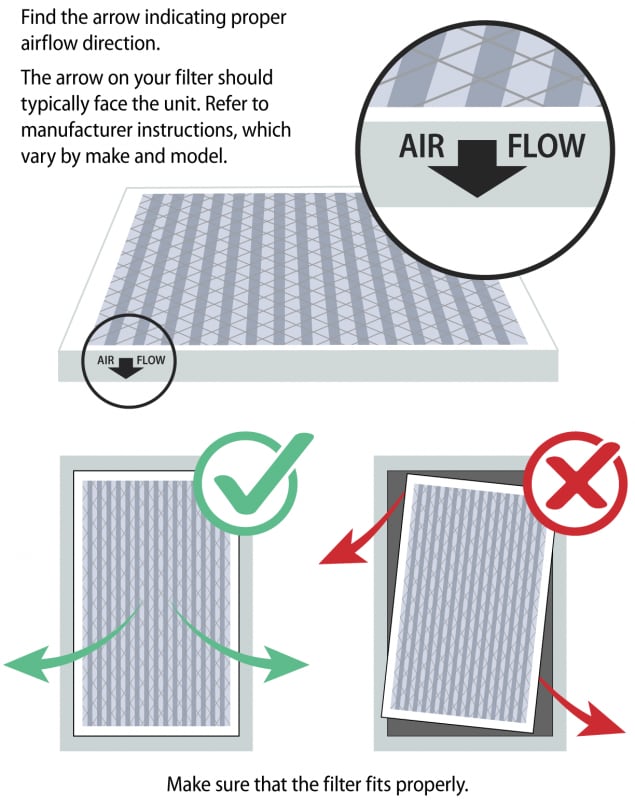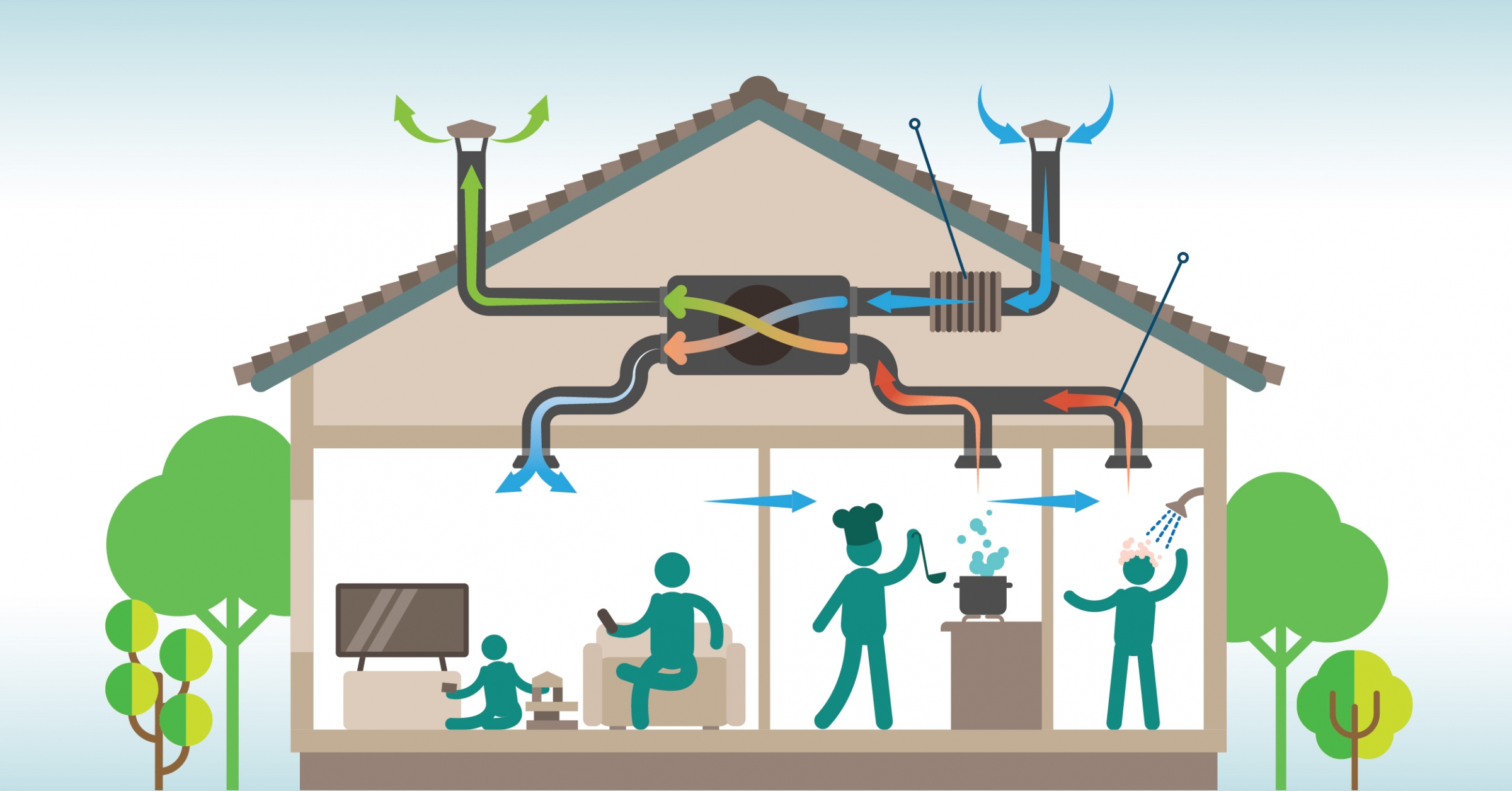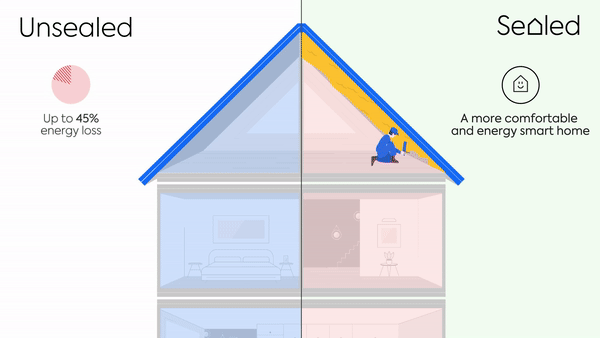How Home Ventilation Melbourne Helps Prevent Mold and Dampness
Wiki Article
Understanding the Value of Home Air Flow for a Healthier Living Atmosphere
Home air flow plays a vital function in keeping a healthy living environment. It promotes the exchange of outdoor and interior air, which is essential for boosting air high quality. Without appropriate ventilation, homes can come to be breeding grounds for irritants and pollutants. The effects of poor air flow can be substantial. This raises the inquiry of how property owners can successfully implement air flow techniques to protect their health and wellness and well-being. Comprehending these methods is essential.
The Fundamentals of Home Air Flow
Home air flow offers as a crucial element of indoor air top quality and comfort. It involves the process of exchanging stale indoor air with fresh outside air, therefore lowering moisture and regulating temperature. Correct air flow systems can include all-natural approaches, such as open home windows and vents, along with mechanical systems, such as exhaust followers and air exchangers. Effective home ventilation helps stop concerns like interior mold growth and the build-up of harmful particles. It additionally improves general energy efficiency, as well-ventilated rooms can keep comfortable temperatures with much less dependence on home heating and cooling down systems. Comprehending the essentials of home air flow is essential for property owners seeking to produce a much healthier living setting for themselves and their families.
Common Resources of Indoor Air Contamination

Numerous might not realize it, indoor air pollution can originate from different resources within a household. Usual factors consist of volatile organic substances (VOCs) produced from paints, solvents, and cleaning items. Home appliances, such as gas ovens and fireplaces, can release harmful gases like carbon monoxide and nitrogen dioxide. Furthermore, mold and mildew and mildew flourish in damp areas, launching spores that affect air quality. Family pet dander, allergen, and pollen can gather inside your home, further exacerbating air pollution degrees. Smoking cigarettes inside produces hazardous chemicals that remain airborne. Developing products, consisting of asbestos and formaldehyde, can off-gas harmful substances. Recognizing these resources is vital for preserving a much healthier indoor environment and advertising effective air flow techniques.
Wellness Impacts of Poor Air Flow
Interior air contamination can have considerable health and wellness implications, specifically when ventilation is poor. Poor air flow can result in the accumulation of harmful toxins, such as unstable organic substances, mold, and particulate issue. This buildup might result in respiratory system issues, including bronchial asthma, allergic reactions, and persistent obstructive pulmonary illness. People may experience signs like frustrations, tiredness, and irritability of the eyes, nose, and throat. At risk populations, such as children and the elderly, are at higher risk for serious health and wellness effects. Long-term exposure to badly ventilated atmospheres can likewise add to a lot more severe problems, consisting of heart diseases. As a result, making certain correct air flow is essential for maintaining a healthy and balanced living environment and reducing the risk of health problems related to indoor air pollution.Effective Ventilation Techniques for Your Home
Appropriate air flow is crucial for keeping a healthy and balanced interior environment, and carrying out efficient strategies can greatly boost wikipedia reference air high quality. Homeowners can begin by guaranteeing that exhaust followers are installed in bathroom and kitchens to remove excess moisture and smells. Opening home windows on a regular basis allows fresh air to flow, particularly during light weather. Furthermore, using air purifiers with HEPA filters can assist record airborne contaminants. For homes with home heating and cooling systems, keeping a/c systems and altering filters routinely is essential for peak performance. Incorporating all-natural air flow strategies, such as cross-ventilation, can also improve air movement. Finally, securing any leakages in home windows and doors avoids unwanted drafts, which can interfere with regulated airflow, inevitably resulting in boosted indoor air high quality and convenience.Preserving Ideal Air Top Quality Year-Round
To keep perfect air high quality year-round, home owners must embrace a positive strategy to managing their interior atmosphere. Routinely keeping an eye on indoor air More Info quality is vital; this includes checking for pollutants such as dust, mold and mildew, and unpredictable organic compounds (VOCs) Carrying out effective air flow systems, such as exhaust followers and air purifiers, can greatly decrease airborne contaminants. In addition, regular upkeep of heating and cooling systems assurances peak performance and air blood circulation. House owners must also consider moisture degrees, as excessive moisture can cause mold growth. Seasonal adjustments may necessitate adjustments in air flow approaches to suit varying outside air top quality. By prioritizing these methods, homeowners can produce a much healthier living room, promoting overall wellness for all occupants throughout the year.Often Asked Concerns
How Can I Tell if My Home Requirements Better Ventilation?
To identify if a home requires better air flow, one need to observe signs such as relentless humidity, mold growth, moldy odors, condensation on windows, or boosted allergy symptoms, suggesting insufficient air movement and possibly poor interior air high quality.What Are the Indicators of Poor Indoor Air High Quality?

Can Houseplants Improve Indoor Air Quality Properly?
The performance of houseplants in boosting indoor air quality is questioned. While some researches suggest they can soak up contaminants and generate oxygen, their overall effect might be minimal contrasted to proper ventilation and air purification systems.Exactly how Typically Should I Change My Air Filters?
The regularity of air filter changes normally depends upon use and filter type. Normally, it is recommended to replace filters every 3 months, though families with family pets or allergies may call for even more regular modifications for excellent efficiency.Exist Any Type Of Details Air Flow Systems for Allergy Sufferers?
Numerous air flow systems, such as HEPA-filtered units, effectively reduce irritants in the air. Home Ventilation Melbourne. These systems trap pollen, pet dog, and dirt dander, offering allergy patients with a cleaner, much healthier interior environment while taking care of air quality efficiently
It assists in the exchange of interior and outside air, which is top article important for boosting air top quality. Home air flow offers as a vital part of indoor air high quality and convenience. It involves the procedure of trading stagnant indoor air with fresh outdoor air, thereby decreasing humidity and regulating temperature level. Interior air pollution can have considerable health and wellness ramifications, especially when ventilation is inadequate. Proper ventilation is crucial for keeping a healthy interior setting, and implementing effective techniques can greatly enhance air top quality.
Report this wiki page